Sony Vaio Z2: Everything is Peripheral
by Dustin Sklavos on February 13, 2012 12:55 AM ESTBut the Screen is Amazing
For all of the weaknesses the Sony VAIO Z2 has, the one aspect of it that can't be denied is the quality of the screen. While it still fails the TN panel test (looking at it from a low angle for washout), overall picture quality is absolutely stellar. High pixel density screens have historically performed exceptionally well for us, and the Z2's is no different.
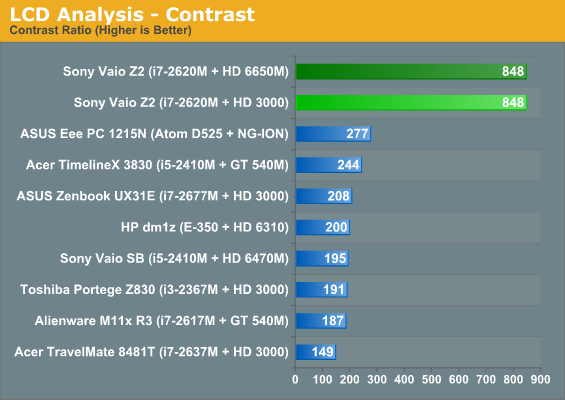
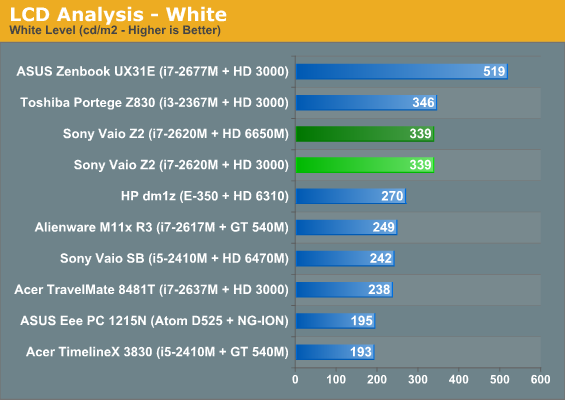
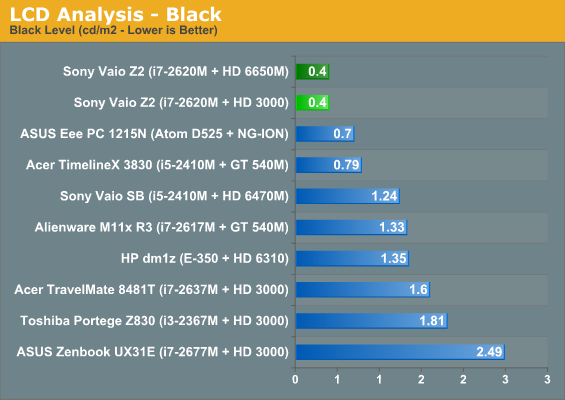
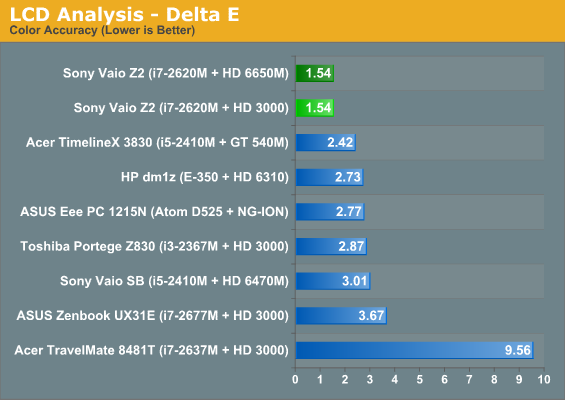
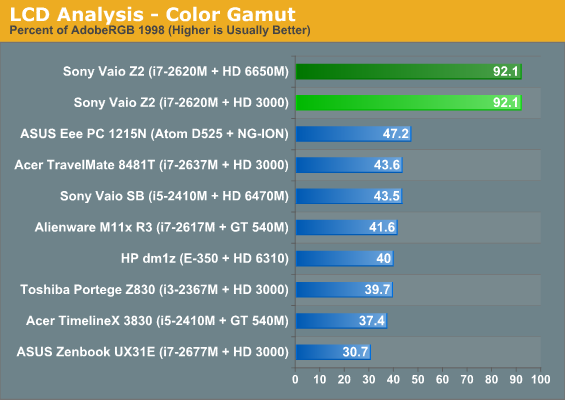
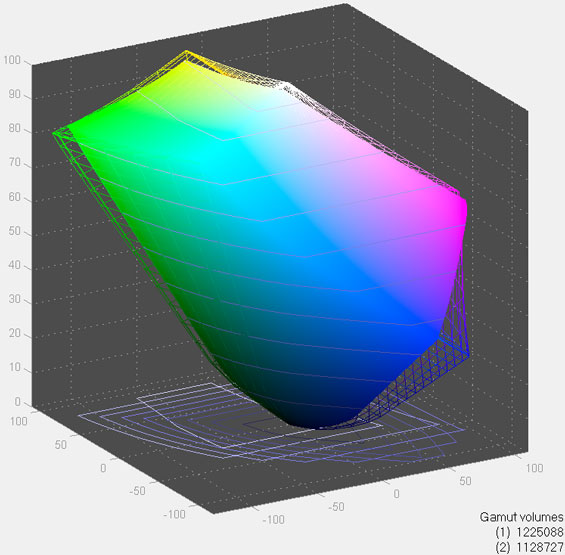
Fantastic contrast, color accuracy, color gamut...the Sony VAIO Z2's 1080p screen is among the best screens we've ever tested and embarasses the competition. While other manufacturers continue to dump poor quality 768p screens in their portables, Sony shows everyone else how it's done. There's a measure of backlight bleed at the bottom, but uniformity is generally superior to other notebooks in the Z2's class.
Viewing angles are also pretty good; the gallery doesn't tell the whole story. Finding the sweet spot for viewing isn't difficult at all, it's only at extreme angles that the screen suddenly washes out dramatically. There's a little bit of latitude before everything goes to hell, which is better than can be said for most notebook TN panels.















88 Comments
View All Comments
Malih - Monday, February 13, 2012 - link
I'm curious how low would the temperature be, and how much longer the battery life is if it uses an i5 (or maybe i3?).Primarily cause I don't expect too much CPU power with an ultrabook, and the cooler it runs, the less noisier it is, the better, just as long as I can browse the internet, watch HD movie, run a development web server and code comfortably, preferably on 8-hour or so battery life.
Perhaps if AnandTech could test/request some of the i3 or i5 Ultrabooks from manufacturers instead of maximum performance hardware in the future.
mczak - Monday, February 13, 2012 - link
core i5 instead of core i7 doesn't really buy you anything - in fact it should be slightly slower for the same power usage.I think though if the fan really has trouble cooling that 35W chip Sony should have opted for a i7 25W instead. If you compare the i7 2620M (35W) with the i7 2649M (25W, same price) you'll notice you don't really give up that much (in contrast to the 17W options which definitely sacrifice peak performance quite a bit).
The i7 2649M has 2.3Ghz clock with 3.2Ghz turbo, while the i7 2620M has 2.7Ghz clock with 3.4Ghz turbo. That's just 15% deficit for base clock and 6% for turbo. The IGP is also clocked lower but since you've got a dock with discrete graphics it probably isn't that important.
(In contrast the fastest 17W i7, the i7-2677M, has just 1.8Ghz base clock, with 2.9Ghz turbo, a bigger loss percentage wise against the 25W i7.)
JarredWalton - Monday, February 13, 2012 - link
While the i3, i5, and i7 are all rated at 35W TDP, that's not what they'll actually draw on a consistent basis. My experience in the past has been that, depending on the voltage of a specific CPU (which varies slightly even for the same clock speed), you will find i7 frequently uses a bit more power (offers slightly lower battery life) than i5. It's usually not enough of a difference to worry about, though -- like less than 5%. My feeling is that 35W is just pushing the limits of the cooling solution a bit too hard; either they need a slightly thicker laptop (thicker = more airflow), or they need a lower TDP CPU.mczak - Tuesday, February 14, 2012 - link
I'd love to see a test comparing different i7 chips (with several identical ones to account for variation) to different i5 chips (again with several identical ones).There used to be a time where faster chips had a published TDP which was larger than slower ones (they often also had higher voltage). Then at some point someone must have realized this doesn't look good, and all chips had the same TDP (or rather same TDP class) even though it was plainly obvious the power draw of the faster chips was still higher (they continued to have higher frequency, the same or higher voltage, and leakage wasn't much of a factor).
Nowadays, with multiple VIDs and leakage being an important factor, this isn't that obvious. but it would not be surprising if it's still somewhat true.
I agree though it would not be enough of a difference in any case to make a significant difference for cooling (hence the 25W suggestion, though this implies core i7 as there are no current mobile i3/i5 25W chips).
Malih - Monday, February 13, 2012 - link
Thanks, I wasn't aware they have the same TDP. I wouldn't mind the 17W i7 if the temp is lower, guess I'll be looking for laptop with this CPU.I assumed since it is a quad core the i7 probably would produce more heat, compared to dual core i5 (or i3).
Malih - Monday, February 13, 2012 - link
Oh, I just noticed on the specs sheet that the i7 2620M is a dual core.vavutsikarios - Monday, February 13, 2012 - link
could you please provide the dimensions and weight in metric system please?axelthor - Monday, February 13, 2012 - link
Yes please!mtoma - Monday, February 13, 2012 - link
Amen to the metric system! AnandTech aims to be an international site, yes? Progress, progress, progress, much like we demand to the notebook manufacturers.ratte - Monday, February 13, 2012 - link
Agree, really annoying to have to translate everytime